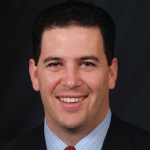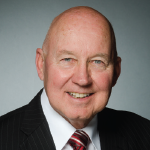
Mumemories / shutterstock.com
Missed appointments have long been a problem for rheumatology practices. A recent poll from the Medical Group Management Association (MGMA) found no-shows were the single biggest challenge reported by practice leaders, with 44% of respondents citing the issue.1
If a patient does not come to the office when scheduled, it starts a cascade of events with impacts on the patient, the practice, other patients and even the healthcare system as a whole. One issue is the financial impact on the practice. As with airlines, when the time of the appointment (or flight) passes, there is no way to recoup those financial losses.
No Shows & Practice Income
“I see around 30 people a day, and if 10% do not arrive, that is three slots a day that aren’t producing revenue,” says Adam J. Grunbaum, DO, FACOL, FACR, physician/owner of Gulf Coast Rheumatology PLLC, Trinity, Fla. “It never seems to be a big deal that day. But three a day is 60 patients missed over 20 working days a month, and it adds up.”

Dr. Grunbaum
David N. Gans, MSHA, FACMPE, senior fellow, industry affairs at MGMA Consulting in Englewood, Colo., notes an MGMA report on physician-owned, single-specialty, medical subspecialty practices showed collections per medical procedure of around $87.34. That would mean around $5,240 in revenue is lost per month. With an 11-month year (accounting for vacation, sick days, holidays, etc.), revenue foregone runs around $57,650. This is a per physician estimate, so the impact on groups is even higher.
There are also potential liability concerns. Missed appointments without follow-up could put a physician at risk for negligence if the patient gets worse, putting their health at risk. Other possible exposures would include a delay or even failure to diagnose.
Risk to Other Patients

Mr. Gans
Other patients can be put at risk if a practice’s no-show rate is high.
“We have plenty of patients who want to be seen, but we don’t have the slots available,” says Angie Boling, office manager for Medical Specialists, Johnson City, Tenn. “There is already a six-month waiting time for new patients. Not only do we suffer as a business when people don’t show up, but patients suffer medically because we can’t work our list of patients who want early appointments.”
One acute care hospital system looked at no-show rates following implementation of a new electronic medical records (EMR) system. It improved the number of people missing appointments. The hospital’s next available appointment average went from 100 days to 55 days.2
Define the Problem
The first step to address no-shows is to define the extent of the problem. Start with your appointment calendar. Most computer scheduling programs indicate if the person made it to the appointment at the correct time.


